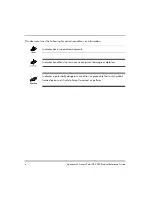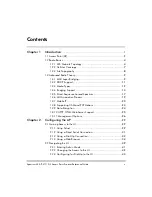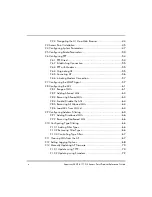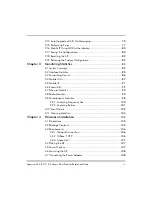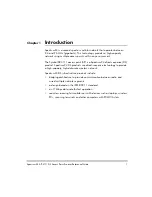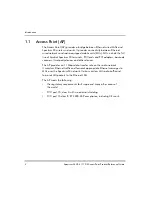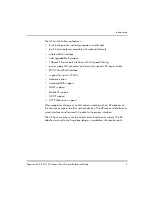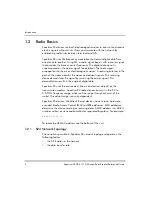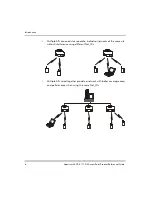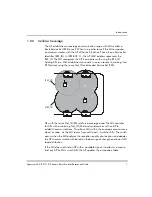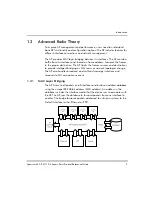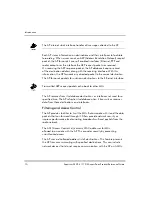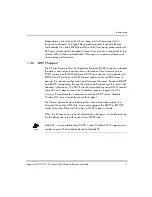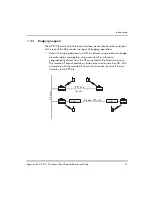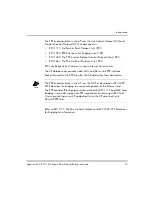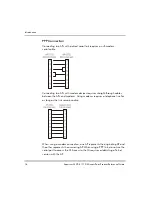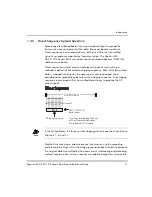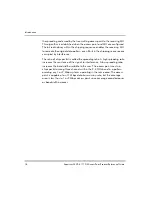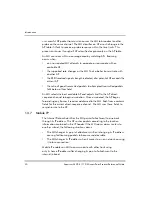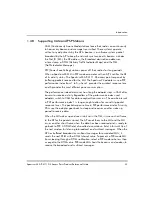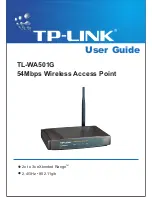
Introduction
10
Spectrum24 AP-4111 DS Access Point Product Reference Guide
The AP internal stack interface handles all messages directed to the AP.
Each AP stores information on destinations and their interfaces to facilitate
forwarding
. When a user sends an
ARP (Address Resolution Protocol)
request
packet, the AP forwards it over all enabled interfaces (Ethernet, PPP and
radio) except over the interface the ARP request packet was received.
On receiving the ARP response packet, the AP database keeps a record
of the destination address along with the receiving interface. With this
information, the AP forwards any directed packet to the correct destination.
The AP forwards packets for unknown destinations to the Ethernet interface.
Transmitted ARP request packets echo back to other MUs.
The AP removes from its database destinations or interfaces not used for a
specified time. The AP refreshes its database when it transmits or receives
data from these destinations and interfaces.
Filtering and Access Control
The AP provides facilities to limit the MUs that associate with it and the data
packets that can forward through it. Filters provide network security or
improve performance by eliminating broadcast/multicast packets from the
radio network.
The
ACL (Access Control List)
contains MAC addresses for MUs
allowed to associate with the AP. This provides security by preventing
unauthorized access.
The AP uses a
disallowed address
list of destinations. This feature prevents
the AP from communicating with specified destinations. This can include
network devices that do not require communication with the AP or its MUs.
Summary of Contents for AP-4111 DS
Page 112: ...Monitoring Statistics 104 Spectrum24 AP 4111 DS Access Point Product Reference Guide ...
Page 120: ...Hardware Installation 112 Spectrum24 AP 4111 DS Access Point Product Reference Guide ...
Page 124: ...A 4 Spectrum24 Access Point AP 3020 Product Reference Guide ...
Page 126: ...B 2 Spectrum24 Access Point AP 3020 Product Reference Guide ...

